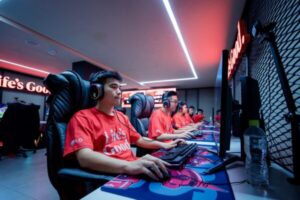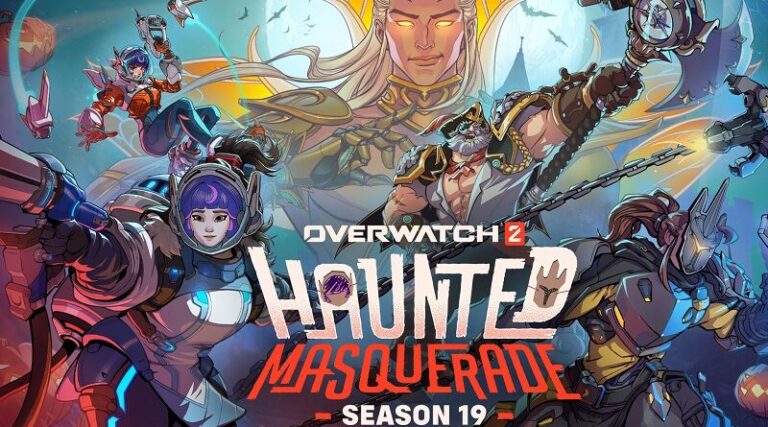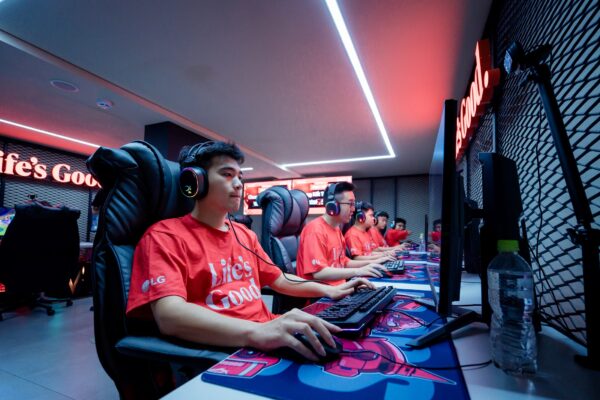The Unrelenting Grip of the MOBA: An Analysis of Gaming’s Most Demanding Genre
In the vast landscape of the Gaming Industry, few genres command the same level of devotion, complexity, and market dominance as the Multiplayer Online Battle Arena, or MOBA. From sold-out stadiums echoing with the roar of Esports News headlines to the quiet focus of millions of players logging into PC Gaming rigs nightly, MOBAs are more than just games; they are global phenomena. Titles like League of Legends and Dota 2 have become cultural cornerstones, shaping online communities and defining what Competitive Gaming means in the modern era.
Yet, for all its popularity, the genre is a notoriously difficult fortress to breach. For every success story, there is a graveyard of ambitious titles that failed to capture a sustainable audience. This raises a critical question: What are the fundamental design pillars that make a MOBA so compelling and simultaneously so difficult to replicate? This article delves into the core anatomy of the MOBA, analyzes the immense challenges new contenders face in a saturated market, and explores the potential avenues for innovation that could define the genre’s future. We will dissect the intricate mechanics, from game design to player psychology, to understand why this genre continues to be both a developer’s ultimate challenge and a player’s deepest obsession.
Section 1: The Anatomy of a MOBA – Core Pillars of Design
At its heart, a MOBA is a complex fusion of real-time strategy, role-playing, and team-based action. While variations exist, successful MOBAs are built upon a foundation of three interconnected design pillars that create a deep and endlessly replayable experience. Understanding these pillars is crucial to appreciating the genre’s depth and the difficulty of innovating within it.
The Symmetrical Battlefield: A Canvas for Strategy
The quintessential MOBA map is a masterclass in strategic design. Typically featuring a three-lane structure (top, middle, and bottom) connecting two opposing bases, this layout is deceptively simple. Each lane is punctuated by defensive towers that teams must destroy to advance toward the enemy’s core structure—the Nexus in League of Legends or the Ancient in Dota 2. Between these lanes lies the “jungle,” a neutral territory filled with monster camps that provide gold and powerful buffs. Key objectives, like the Dragon or Baron Nashor, are strategically placed to force team fights and create pivotal moments in the match. This design, seen in most Strategy Games, ensures a constant tug-of-war, where map control, vision, and objective prioritization are as important as mechanical skill. The near-perfect symmetry of the map ensures fairness, while subtle asymmetries, like the Roshan pit placement in Dota 2, add layers of strategic depth for each side.
The Trinity of Power: Heroes, Items, and Abilities
If the map is the canvas, then the heroes are the paint. Each MOBA boasts a vast and diverse roster of unique characters, each with a distinct set of abilities, strengths, and weaknesses. These heroes typically fall into archetypes common in RPG Games, such as tanks (durable front-liners), carries (damage dealers who scale into the late game), and supports (utility-focused enablers). The gameplay loop revolves around leveling up these heroes to unlock and strengthen their abilities.
This character progression is amplified by the item system. By earning gold, players purchase items that augment their hero’s stats and grant new active or passive effects. This creates an intricate in-game economy and a deep layer of strategic choice. A player’s “build” can drastically alter their hero’s function, allowing them to adapt to the enemy team’s composition. The synergy between a hero’s innate abilities and their chosen items is where the true complexity and skill expression of MOBA Games shine, a core principle of modern Game Design.
The Economic Engine: Gold, Experience, and the Art of Farming

Underpinning every action in a MOBA is an economic system driven by gold and experience. The primary method of earning both is “farming”—the act of landing the killing blow on enemy minions, or “creeps,” that continuously spawn and march down each lane. This mechanic, known as “last-hitting,” is a fundamental skill that separates novice players from veterans. Excelling at it provides a direct and compounding resource advantage over your opponent. Gold from farming, jungle camps, and hero kills is then funneled into items, creating a tangible power differential. This constant economic battle turns the early phases of the game into a tense, calculated dance of resource management and lane pressure, making every single last-hit a meaningful action.
Section 2: The Market Gauntlet – Why New MOBAs Struggle to Survive
The history of the Gaming Industry is littered with the ghosts of MOBAs that aimed for the throne but fell short. Breaking into this market is arguably one of the toughest challenges in Game Development today, primarily due to the immense gravity exerted by the established titans and the unique nature of player investment in the genre.
The Incumbent Giants: A Duopoly of Dominance
Any discussion of the MOBA market must begin with League of Legends and Dota 2. These games aren’t just market leaders; they are institutions. With over a decade of continuous development, they have amassed colossal, deeply entrenched player bases. Their ecosystems extend far beyond the game client, encompassing massive esports scenes covered by League of Legends News and Dota 2 News, thriving content creation communities on platforms like Twitch, and a vast repository of community-generated guides and knowledge. According to recent Gaming News, these titles maintain millions of active players, and their premier esports events, like The International for Dota 2, boast prize pools that rival major traditional sporting events. A new MOBA isn’t just competing with a game; it’s competing with an entire culture and a decade of player history.
The Graveyard of Contenders: Lessons from the Fallen
Many have tried to challenge the duopoly. Games like Paragon by Epic Games, with its stunning visuals powered by Unreal Engine, and Heroes of the Storm by Blizzard, with its accessible design, made significant splashes. However, they ultimately failed to pull a critical mass of players away from the established leaders. The reasons are multifaceted. Some, like Paragon, struggled with core gameplay pacing and monetization. Others, like Heroes of the Storm, streamlined mechanics like last-hitting and item shops, which, while making the game more accessible, alienated some hardcore players who craved deeper complexity. These case studies show that even AAA Games from major studios can fail if they don’t offer a compelling enough reason for players to switch, a lesson often highlighted in Unreal Engine News and development post-mortems.
The Player Investment Problem
The single greatest barrier to entry for a new MOBA is player investment. This genre demands an enormous time commitment. Learning the matchups for over 160 champions in League of Legends or the intricate mechanics of Dota 2 can take thousands of hours. Players are invested not just in their mechanical skill but also in their accounts, which hold years of ranked progress, unlocked characters, and valuable cosmetic items. Asking a player to abandon this history is like asking them to abandon a long-term hobby. A new game must offer a proposition so unique and compelling that it justifies starting over from scratch, a monumental task for any developer.
Section 3: Avenues for Innovation – Evolving the MOBA Formula
Despite the market’s harsh realities, the desire to innovate within the MOBA space persists. Success is no longer about cloning the top-down, three-lane formula but about evolving it. Several key avenues for innovation have emerged, offering glimpses into the potential future of the genre.
Changing the Perspective: The Third-Person Revolution

One of the most successful evolutions of the formula is the third-person MOBA, exemplified by Smite. By shifting the camera from an isometric top-down view to an over-the-shoulder perspective, the game fundamentally changes the feel of combat. Every ability becomes a skillshot that must be manually aimed, creating a more action-oriented experience reminiscent of FPS Games. This perspective shift makes the game feel more immersive and visceral. It also makes the game more intuitive for players coming from action games on both PC and consoles, bridging the gap between traditional MOBA strategy and direct character control, a topic often discussed in PlayStation News and Xbox News when new cross-platform titles are announced.
Streamlining for Accessibility: Reaching a Broader Audience
Recognizing the genre’s notoriously steep learning curve, some developers have focused on accessibility. Nintendo and TiMi Studio Group’s Pokémon UNITE is a prime example. It simplifies core mechanics by removing last-hitting in favor of a point-scoring system and condensing matches into a tight 10-minute format. This approach has proven highly successful, especially in the Mobile Gaming and Nintendo News spheres, attracting a more casual audience that might be intimidated by the complexity of its PC counterparts. While this can sometimes sacrifice strategic depth, it opens the genre to millions of new players, proving there is a significant market for a less demanding MOBA experience.
Genre-Bending and Hybridization
The future may lie in blending MOBA elements with other popular genres. Blizzard’s Overwatch, while primarily a hero shooter, incorporates MOBA-like elements with its unique hero abilities, ultimate abilities, and team-based objective play. Similarly, the now-defunct Battlerite focused exclusively on the team-fighting aspect of MOBAs, removing laning and farming entirely for a pure arena combat experience. As game development tools like Unity and Unreal Engine become more flexible, the potential for creating compelling hybrids—perhaps mixing MOBA mechanics with elements from Battle Royale or MMORPGs—is vast. These hybrids can carve out a unique niche by offering a familiar yet refreshingly different gameplay loop.
Section 4: Building and Playing a Modern MOBA – Recommendations and Best Practices
For both developers aspiring to create the next big MOBA and players looking to dive into this challenging genre, a strategic approach is essential for success.

For Developers: Finding Your Niche
Aspiring MOBA developers must accept that directly competing with League of Legends on its own terms is a losing battle. The key is differentiation.
- Identify a Unique Hook: Whether it’s a new perspective, a blended genre, or a radical simplification of mechanics, your game needs a strong, unique selling proposition.
- Build Community Early: A strong Gaming Community is a MOBA’s lifeblood. Engage with players from the earliest stages of development. Foster a positive and inclusive environment to build a loyal following that can sustain the game through its crucial launch period.
- Prioritize Technical Excellence: A competitive game demands flawless performance. A stable server infrastructure, responsive netcode, and optimization across a range of Gaming Hardware—from high-end Gaming PCs with the latest Graphics Cards to modest Gaming Laptops—are non-negotiable.
- Fair Monetization: Avoid pay-to-win mechanics at all costs. The most successful MOBAs monetize through optional cosmetics, allowing the core gameplay to remain a level playing field.
For Players: Climbing the Learning Curve
Getting into MOBAs can be daunting, but it’s a rewarding journey.
- Start Simple: Consider beginning with a more accessible title like Pokémon UNITE or Smite‘s Arena mode to learn the basics of team fighting without the pressure of complex lane mechanics.
- Focus on One Role: Don’t try to learn every hero at once. Pick one role (e.g., support, mid-lane) and master two or three heroes within it. This will help you learn the fundamentals of the game more effectively.
- Watch and Learn: Platforms like Twitch are invaluable resources. Watching high-level players and streamers provides insights into strategy, item builds, and decision-making that are hard to grasp on your own. Keep an eye on Twitch News for top streamers in your chosen game.
- Invest in Good Peripherals: While you don’t need the most expensive gear, a reliable set of Gaming Peripherals, especially a responsive Gaming Mouse and a comfortable Gaming Headset for communication, can significantly improve your experience and performance.
Conclusion: The Enduring Legacy and Future of the Arena
The Multiplayer Online Battle Arena remains one of the most significant and challenging genres in the world of Video Games. Its core design—a masterful blend of strategy, action, and RPG progression—creates a gameplay loop of near-infinite depth and replayability, cementing its place at the pinnacle of competitive gaming. The market is an unforgiving gauntlet, dominated by titans who have earned the loyalty of millions through a decade of refinement and community building. For new challengers, success is not found in imitation but in bold, thoughtful innovation.
By changing perspectives, streamlining for accessibility, or blending with other genres, developers can still find fertile ground. The future of the MOBA will likely be defined not by a single successor but by a diverse ecosystem of games that reinterpret its core tenets for new audiences and platforms. For players, the genre offers an unparalleled journey of mastery and teamwork. It is a testament to the enduring power of deep, strategic, and endlessly competitive game design.












